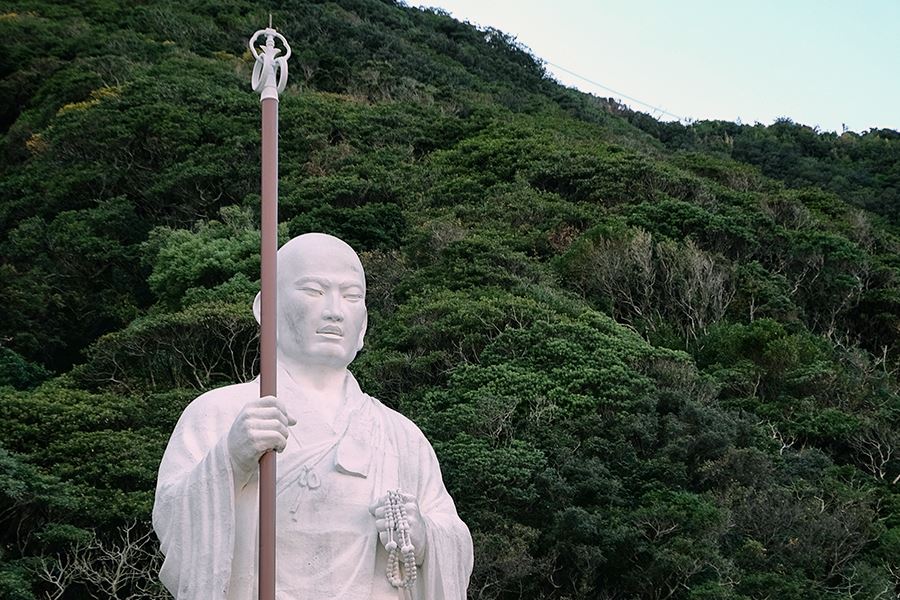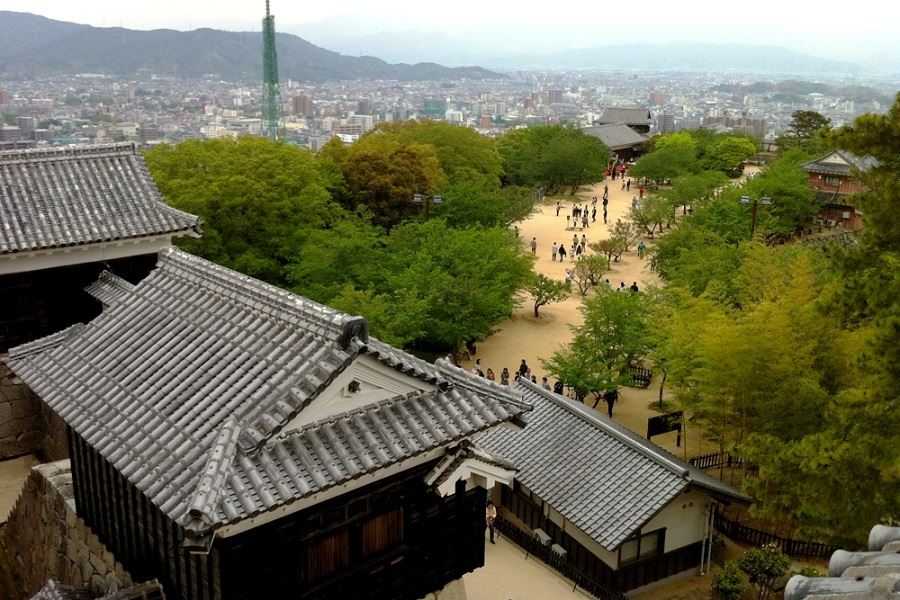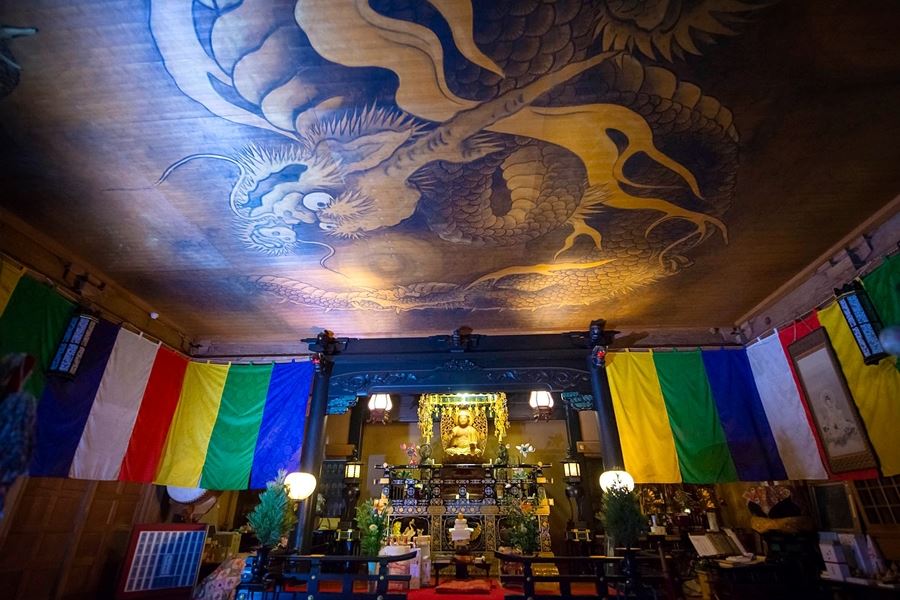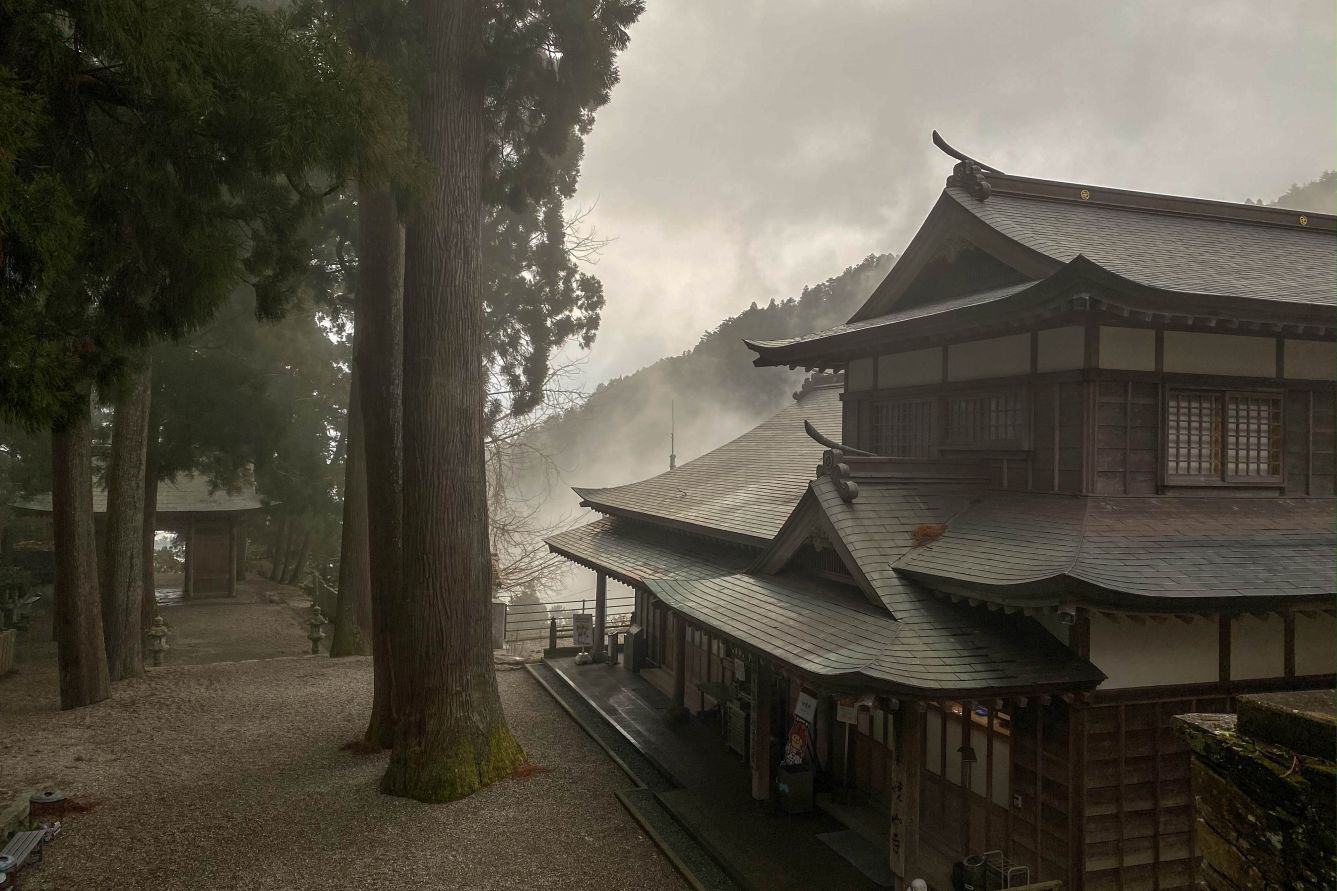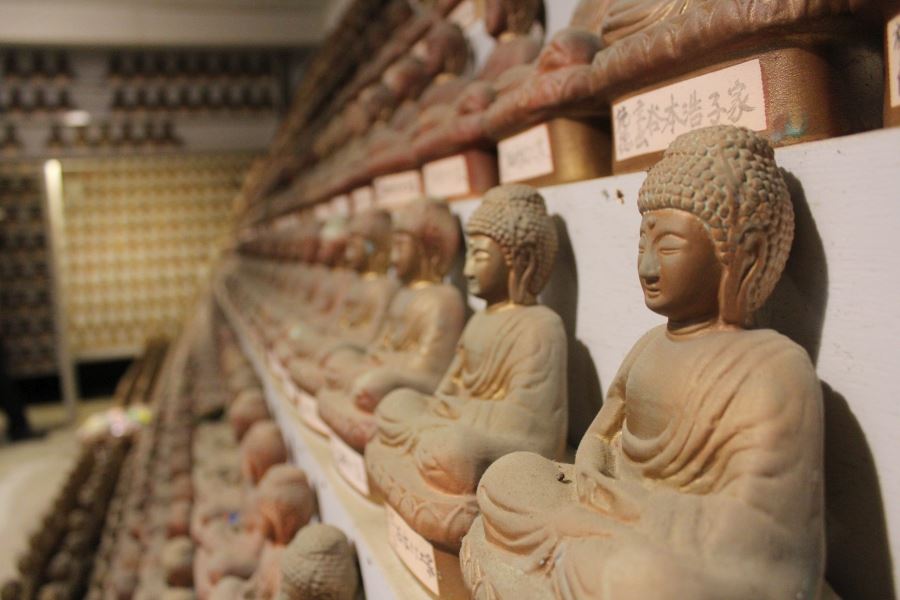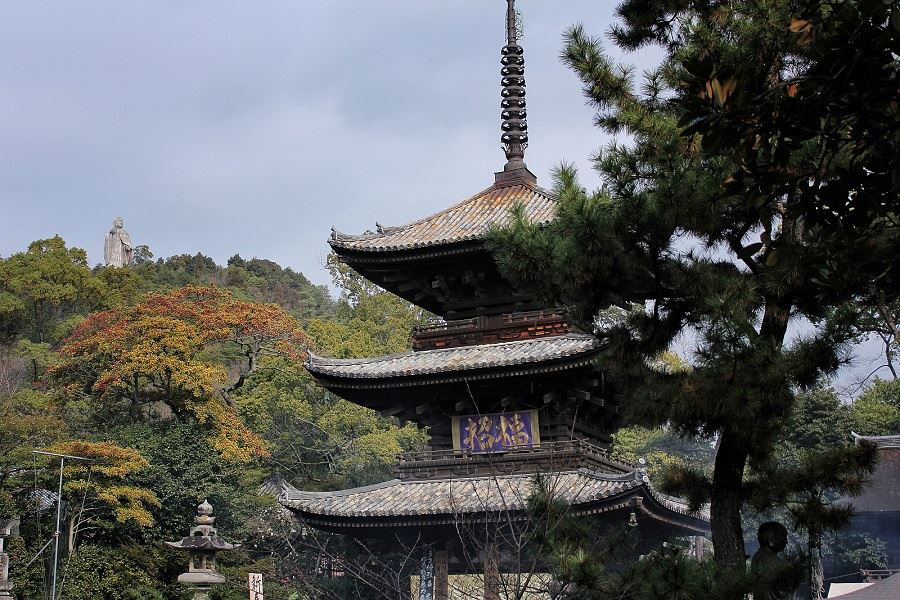Emon Saburō
Home » Emon Saburō
Emon Saburō
Name In Japanese : 衛門三郎
Pronunciation : emon saburō
Period : Early 9th century
Legends
Emon Saburō, the richest man in Shikoku, lived near Matsuyama. He was notorious as a cruel and grasping landlord. A beggar-priest appeared outside his gate, seeking alms. Saburō drove him away with curses. This happened for eight days in a row. On the eighth day, Saburō broke the pilgrim’s begging bowl with a stick and chased him away. The broken bowl fell in eight fragments.
Thereafter Saburō’s eight sons fell ill and died, one after the other. Recognizing at last his own wickedness, Saburō went to the mendicant’s hut to ask forgiveness, but the mendicant had moved on. Saburō left his home and followed the priest, eventually making twenty circuits of Shikoku clockwise, a task of at least four years. But in vain. Finally, he tried the route in reverse. Exhausted, he collapsed on the road, and as he lay dying, the mendicant appeared. The priest was Kūkai. Saburō begged forgiveness and received absolution. Kūkai asked him if he had a final request. Saburō asked to be reborn into a wealthy family in Matsuyama so that he might restore a neglected temple. Kūkai picked up a stone, wrote something on it and gave it Saburō who then expired, holding the stone. Kūkai buried Saburō, and marked the place with the staff that had supported Saburō on his long journey.
Shortly afterwards a baby was born to the powerful Kōno clan of Matsuyama. The child was clasping a stone inscribed with the words, “Emon Saburō is reborn”. The child, named Kōno Yasukata, grew up to be a generous, open-hearted person, who used his wealth to restore the dilapidated temple Annyō-ji, now named Ishite-ji, “stone-hand temple”. Today, you can still see the stone there, and an inscription dating from 1567 which tells this story.
Is it true ?
Kūkai, whose posthumous name is Kōbō Daishi, was a real person. He was born at Zentsū-ji in Shikoku, and his remains are preserved at Mt. Kōya in Wakayama. He certainly visited many of the temples on Shikoku, undertook ascetic practices, and carried out numerous public engineering works. Kōno Yasukata was also a real person. But there’s no record of anybody called Emon Saburō. However, there are some suggestive indications that such a person may have existed. Temple 46 outside Matsuyama is called Yasaka-ji (likely etymology: yatsu zuka = eight tombs). Nearby are eight ancient burial mounds, which are said to date from the time of Emon Saburō and to hold his eight sons.
Emon Saburo’s grave can be found on the path between Temple 11 and Temple 12, where Kūkai is said to have blessed and buried him. A tall cedar there is said to have grown from Saburō’s staff. And at Ishite-ji, there’s the miraculous stone, although it’s much too large to fit in a baby’s hand.
The story of Emon Saburo is repeated blandly as if it’s only natural that Saburō had it coming, and all his offspring should die. What’s left unsaid is what agency Kūkai had, if any, in the deaths of the young lads. From this point of view, the fable can be seen in a sinister light. Nevertheless, the legend reflects some important aspects of the Shikoku pilgrimage. It establishes that Kōbō Daishi is a continuous, all-seeing presence accompanying pilgrims, who provides absolution for meritorious behaviour. This is expressed in the words “dogyo ninin: two people going together”. It encourages the custom of giving osettai or alms, and discourages the abuse of pilgrims. It suggests an origin for the practice of doing the pilgrimage in reverse. At each stop, when Saburō discovered that he was too late, he left a slip of paper with his name. This tradition continues today with the fuda. The legend suggests that those with wealth should spend it on the upkeep of temples. And Emon Saburo’s rebirth as a better person reminds the Buddhist faithful that the Shikoku pilgrimage is a big karmic step in the right direction.
Related Tours

Experience the most beautiful and interesting temples of the Shikoku Pilgrimage in seven days.

A tour for families or friends, staying in the most characterful kominka and ryokan of Shikoku.

Visit the most beautiful and interesting temples of the Shikoku Pilgrimage and walk the toughest trails.

